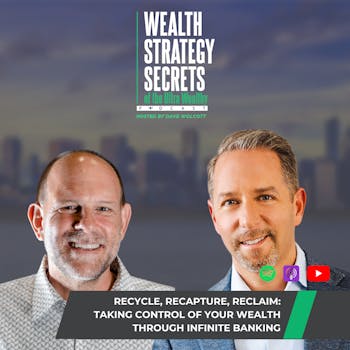Listen Here
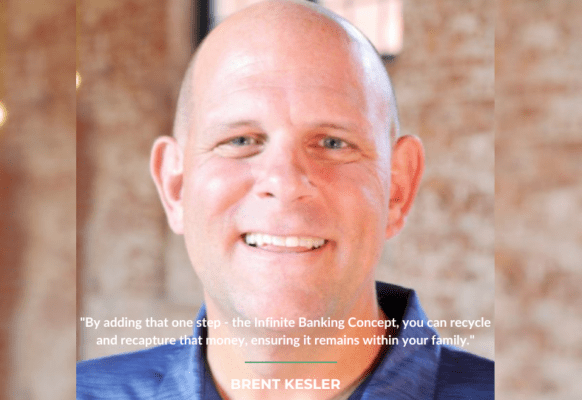 In this episode, we had the privilege of hosting Brent Kesler, a former chiropractor turned financial expert who has transformed his life through the revolutionary Money Multiplier (TMM) Method.
In this episode, we had the privilege of hosting Brent Kesler, a former chiropractor turned financial expert who has transformed his life through the revolutionary Money Multiplier (TMM) Method.
His passion for this financial concept led him to become a dedicated teacher of the method, with the goal of helping individuals take control of their financial destinies. Regardless of income level, Brent believes that everyone should have access to the TMM Method to manage and grow their wealth.
During the episode, he delved into the intricacies of the method, explaining how individuals can recycle, recapture, and maintain total control of their hard-earned dollars. Brent provided insights on avoiding fractional reserve banking and outlined a strategy to reclaim all the money spent on every car purchased for oneself and their family for a lifetime.
Listen now to gain valuable insights from Brent’s expertise, you will discover a powerful financial strategy that will empower you to take charge of your financial lives.
In This Episode
-
How he successfully paid off a staggering $984,711 in third-party debt within just 39 months
-
The specifics of Infinite Banking Concept as a process and not an investment
-
His concept on how to recycle, recapture, and maintain total control of hard-earned dollars through The Money Multiplier Method
-
Strategic advice and insights to manage multiple whole-life policies
Welcome to another episode of Wealth Strategy Secrets. Our next guest is Brent Kesler. Brent runs financial mastery with The Money Multiplier (TMM), your guide to building wealth effectively. He follows a proven blueprint to take control of your finances, using age-old wisdom and strategies. We’re going to learn more about the Infinite Banking approach and how Brent was able to eliminate nearly a million in debt in 39 months. Welcome to the show, Brent.
Thanks for having me. I’m excited to be here to share.
It’s great to connect. The audience will enjoy this. We’re a big proponent of IBC (Infinite Banking Concept). We’ve helped many clients to realize how to put this in their portfolio, and how strategic it is. But I find that there’s still always this learning curve right around Infinite Banking.
Life insurance is the product we use to build, keep, and create wealth.
What does it mean? How do you implement it? What are some specific use cases of how it can be successful, right in your strategy? I’ve been a practitioner myself for over 10 years and I’m about to open up some more policies this year.
But I’m constantly learning as well. It’s always fascinating to see how people have leveraged the strategy. I know you’ve had a ton of experience there, but why don’t we start with this kicker of how you eliminate a million in debt in 39 months?
That’s what this concept is all about. Not a lot of people know about it. The people that do know about it, when they see it – it’s either a couple of different reactions; It’s either like, “This is awesome. I got to start this in my own life.” Or, “There’s no way that could be true. This is a scam. There’s something you’re not telling me, there’s no way it could work like this.” Those are usually the reactions that we get.

But the whole concept of Infinite Banking or becoming your banker was driven by a guy named R. Nelson Nash. He wrote this book here called Becoming Your Own Banker. R. Nelson Nash was my mentor. He passed away at age 87 years old back in the year 2019.
This book – Becoming Your Own Banker, completely changed my financial life. I tell everybody that I talk to – all the audiences, “This is a book that you have to add to your wealth-building library. I know it sounds a little too good to be true, but the thing you have to do – if you peel back the onion on this concept, this concept is not new. It’s not a concept invented or created by Nelson Nash. It’s been around for over 200 years.”
If you research the Rockefellers, the Rothschilds, the Morgans, the Stanleys, and the Barclays, this is what they did to build, keep, and create wealth. It’s how Walt Disney started Disneyland. It’s how Ray Kroc funded McDonald’s. It’s how Pampered Chef got started before Warren Buffett bought Pampered Chef. So don’t take my word for it or Nelson’s. Research this concept.
To get to your question, the first thing you want to know is how I even got into almost a million dollars of debt. To give you a quick background, I’m a Chiropractor. I no longer practice chiropractic anymore. I owned five clinics in the Kansas City area. I sold my last one in 2017. That’s when my wife and I became empty nesters.
I moved back here to the state that I grew up in – which is Florida. I wanted to get out of the cold. I’ve been teaching the banking concept since March 2012. I’ve been practicing it in my life since 2008. But I first heard about it in 2006. The very first time that I heard about it in 2006, I thought it was too good to be true. I didn’t believe it, so it took me two years to start implementing it in my own life.
As a Chiropractor, I had chiropractic clinics, so I acquired debt through those chiropractic offices – the overhead, and the expense of running the clinic. The thing is how I was able to get myself into almost a million dollars in debt. I had the chiropractic clinics. I had the house that I lived in. I also had my student loans from chiropractic school.
I had a house on the lake of the Ozarks, which I still have now – between St. Louis and Kansas City. If you have a house on the lake, you have to have a boat and a waverunner, so I had those toys. I am an airplane pilot, I had an airplane. It didn’t take me a lot to become a million dollars in debt.
Back in February of 2008, I started implementing this concept. The reason that I knew exactly how much I was in debt was because that was an exercise that I had to perform. I had to know exactly what my debt load was and it was exactly $984,711. Close enough to a million bucks, close enough for government work.
I applied this concept to my life, I followed the strategies and the teachings in the book, Becoming Your Own Banker, and I was able to pay that debt off in 39 months – three years and three months. I never had to change my cash flow. I didn’t have to work any harder, take any additional risks, or lose control of my money. All I did was add that one step in my life. That step is starting the banking concept.
For the listeners that don’t know what that is, they’re thinking, “What is the banking concept?” The whole concept; because you said you’ve been practicing it for 10 years – it’s what you do – it is putting your money first into Whole life insurance in a mutual company that pays dividends. I know we lost half of the audience when I said the word ‘Life insurance,’ and half of them might have tuned out.
Because they think that it is a conversation about Life insurance. No. Life insurance is the product that we’re going to use to build, keep, and create wealth. That is the vehicle that we’re going to use. All we’re doing in our financial life; and I know a lot of people make this way more complicated than it is. I always tell people to keep it simple. Don’t let the nickel hide the dime. And don’t trip over the dollars to pick up the pennies. Keep this simple. It is simple.
All we’re doing is adding one step in our financial life of where our money goes first. What we’re doing is – we’re putting money into the policy. Then from the policy, we’re going to use that money to pay the debt, the expenses, to make our investments, to do our lending.
Anything at all that we’re doing in our financial life, we’re adding that one step where the money goes first. When you do that now, you’re able to recycle and recapture all of that money that has been going out to other people. Tell me the definition of money. Money is a means of exchange. That is all it is. That is what the definition of money Every day, we exchange money for food, food for money, car for money, house for money, money for house. We exchange it for goods and services.

When you borrow money from yourself, pay it back. Treat your money with the same respect you would give the bank’s.
But, normally, what we do in our life is to give the money to somebody else to buy something. Let’s say, a car, for example. Let’s make believe this is a $20,000 bill, and we’re going to buy a $20,000 car. We give the money to the car dealer. The car dealer gives us the car. He’s got the money. The car is ours. The transaction is over. Everybody goes home happy. That’s the way we’re used to living our lives. But what happened to the $20,000 that I used to buy the car? The money is gone forever. It is gone forever.
When you add this one step or this one concept in your life, not only you can give the car dealer the $20,000 but he’s going to give you the car, he’s got the money, and you get the car. By adding that one step, you’re now able to recycle and recapture that money because that money stays inside of your family. There’s no money being leaked out to other people. You’re recycling and recapturing that money and you can use the same money over again because you’re recycling it.
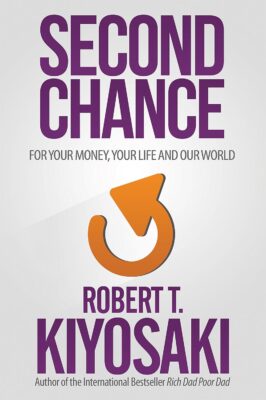
The last thing before I throw it back to you is, there’s this guy. If you don’t know who Robert Kiyosaki is, he wrote a book called Rich Dad Poor Dad. That’s what he is famous for. He also wrote a book called Second Chance. In that book called Second Chance, the concept that I teach – the Infinite Banking concept is exactly what Robert Kiyosaki talks about in the book Second Chance.
However, when he talks about it, he makes it too complicated, and too difficult to understand. People read right through it, and they don’t even know what in the hell they read. The second resource is Tony Robbins. Tony Robbins wrote a book called Money: Master the Game. In chapter 5.4 of Tony Robbins’s book, this concept is exactly what Tony Robbins talks about.
Again, they make it too complicated and too difficult to understand. They don’t know how to implement this in their own life. The thing that we do at the Money Multiplier is we make it stupid and simple to start and implement this concept in your own financial life. It is adding that one simple step.
That is helpful. I appreciate that, Brent. Our audience is sophisticated. I think they understand the process and how this works. Why don’t we break this down into some specifics around the mechanics of the process? You accurately pointed out the use of whole life insurance. Whole life insurance is a product, Infinite Banking is a process. This is where sometimes people will fall short because they think, “My financial advisor or my life insurance company, I have one of those.” However, they’re not using it the way that we’re talking about now, and it was never structured properly in the first place to do that.
You can even call a Life insurance company, your existing one, and they won’t know what you’re talking about when you try to structure it properly. But let’s break it down, let’s make this real for folks, and walk through some real specifics from an income perspective.
Let’s say you’re making 10 grand in a month for round numbers, you make 10 grand from your W-2, or let’s say passive income is coming in. How are you making the mechanics of this simple to put that into your policy? How are you accessing the funds? Are you doing that on a monthly sweep? What have you seen that has been simple for you to use?
If you go to the insurance company, they don’t understand Infinite Banking. They have a life insurance product. The financial advisor is not teaching this because they haven’t been taught this. The things they’re teaching are 401(k)’s, IRA’s, and qualified plans. The concept, the product, is a life insurance vehicle. It’s not about that life insurance product. It’s about the process and how you utilize the policy.
Let’s be clear that this is not any type of insurance policy. It’s not the type of policy that you will buy from your brother-in-law who sells life insurance. No. This is a specifically designed, specifically engineered, whole life insurance policy in a mutual company that pays dividends that is specifically designed for high immediate cash value.
When I say immediate, it means within 30 days. When you put money into this policy, you start accessing that money after 30 days. To use that money for the things that you’re going to buy in life. You’re going to use that cash value immediately. I have tons of examples of this on our website. I do a 90-plus-minute live video on this, with all kinds of different examples.
The thing we do is, we put money into the policy, into that specifically designed insurance company. What we’re doing is paying a premium. The premium that we pay into the policy is up to you. I have clients that put in $100 a month, and our largest client puts $540,000 a month into their policy. You, the client, the customer, always decide how much money you want to put into your policy.
But the way that I tell you to think about it; it’s a bit of a paradigm shift because I know when we pay into an insurance policy, in our mind, we’re thinking of it as a payment, as a debt, as an expense, as a liability. It is a payment. You are paying into the insurance company. You’re paying into that policy. But you have to change the way you think, and you have to look at that premium payment as a deposit.
It’s not about the life insurance product; it’s about the process and how you use the policy.
Because if you’re able to use the money immediately; remember the definition of immediately is ‘within 30 days’, is that money treated more like a payment or a deposit? It’s a deposit. Tell me, what word do you like better, payment or deposit? I’m sure, you’ll say – deposit. Have you ever made too many deposits in your bank account? No.
What we do is we put that money into the policy, and then take all of our debts, all of our expenses; this could be maybe Real estate investing, maybe people out there doing hard money lending or lending money. They’re going to pull that money from the insurance company to put in all of those things I mentioned. Here’s the key. The thing that you’re doing is when you put money into the policy and when you pull money from your policy to do all of those things, you are not taking your money out of the policy.
No, you don’t take your own money. You simply put your policy up for collateral. You take a loan from the general fund of the insurance company – you’re using the insurance company’s money. Why is that a great thing? Because all of your money is still inside of your policy. Even though you’re using money from that policy, you’ve never touched the money inside of your policy. All that money is continuing to grow, and compound in a tax-free growth rate environment, and the government is completely out of your hair.
I don’t know of another vehicle on this planet that allows you to use your money this way. That has these features and benefits, where it’s continuing to grow and you’re able to use it, and it never has a downside. Nobody on this planet – no matter what state you live in, has ever lost money in a whole life policy, in a mutual company that pays dividends. It never happened. Google it, look it up. You won’t find it, because inside the policy, you have guarantees.
The insurance companies are not federally regulated. They’re state-regulated, and they go off of something called Austrian Economics, where $1 has to protect $1. The thing that happens, let’s say, we go to a conventional bank to get money. A conventional bank can loan $8, $10, or $12 for every dollar they have on hand. If everybody in the world made a run to the bank today to get their money, you would get about seven or eight cents out of every dollar.
The bank physically does not have the money to give you. All that FDIC stuff that you hear about, that crap would go totally out the window. The bank does not physically have the money. The insurance company, they have to have those dollars on hand. They can’t overinflate that money. One dollar protects one dollar.
All that money is in that environment because once the money goes into the policy, it grows internally tax-free. What we do is we pay tax on the money one time – one time only. That’s what we want to do. We want to get the money into the policy and pay tax on it. Now it’s in the policy, it’s growing tax-free, and the government is out of our hair.
Then once it’s in there, simply what we do, is we live our life. We buy the things that we want, we invest in the stuff that we do, and we use the money inside of the policy to do everything that we’re doing in life while it’s all inside of that closed system continuing to grow.
If you’re an honest banker with yourself, which you should be – everybody should play honest banker with themselves. Any time you borrow money from yourself, from your policy, from the general fund of the insurance company, you should pay yourself back the same way you would pay a bank back if you borrowed from them.
For example, you go out and buy a new car that’s $50,000 and you’re going to finance it for five years. You’re going to be on a payment plan to pay the bank back and you’re going to do it. You’re not going to skip a beat because if you don’t pay it back, the bank will come repossess your car. When you borrow money from yourself, you should pay yourself back. Treat your money the same way you treat a bank’s money.
If you don’t, you’re saying that your money is not as valuable as theirs. All we’re doing is parking that money, or we’re going to put it in the policy instead of these other places that we’ve been trained our whole life to put it in.

Investments can go up and down in value, but a whole life policy can never decrease— it only goes up.
Those are great examples. I appreciate that. For the listeners out there, the way to think about this in your portfolio – it’s all about velocity. Adding this component of velocity to your overall portfolio, it’s going to give you a lift. By changing your process and becoming more efficient, you’re effectively creating value from existing resources.
The other thing that I find, especially as a business owner who has started several businesses over the years, is we’re constantly challenged with liquidity in our business. You have a great year, and you have a great quarter. But what about the quarter you don’t have? That’s great. There’s no big corporate entity to come and bail you out.
I find this to be a fantastic store of capital to manage your liquidity for an additional runway for taxes. One of the ways I manage my taxes in addition to trying to pay nothing in taxes is using advanced strategies. But by not making those quarterly estimated tax payments to the government, which is an interest-free loan to the government; but putting that capital into my policy and accruing that, it’s growing tax-free compounding, then pulling it out based on what you need.
The keyword you used is ‘velocity’ – a great word. I use the word differently – ‘motion.’ Keep the money in motion. Keep it moving. That’s exactly what you’re talking about because that is what we want to do. We want to keep that money moving. The more that it moves, the more that it grows. Because you tend to continue to recycle and recapture. Then the other thing you said, which you have to nail right on the head was a place to store your money.
There are three books that Nelson Nash wrote. You would probably think that I’m making all this money on the side by promoting Nelson Nash and his books. I don’t make a dime on that, but it is where the information came from. He’s my mentor and it is where it is where I learned the tools to build, keep, and create wealth.
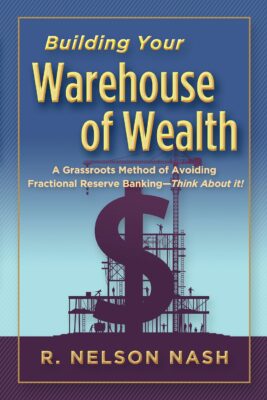
He wrote another book titled, Building Your Warehouse of Wealth. You want a place to warehouse your money, to store your money where it’s protected against everything out there. You’re in total control of it. You have the access. The other word you use is called, ‘Liquidity’ where you need something when you need to purchase something.
Let’s say, to this house I live in – Florida. I live in a community. My house is big, but my roof is bigger because I have an airplane hangar attached to my house. I’m a pilot. I live in an airplane community. What that means is, I have to have a roof over that airplane hanger as well. My roof needed replaced this past year, and it cost me about $180,000 to replace the entire roof of the house and also the hangar roof.
You might be thinking, “$180,000, that sounds crazy. That’s a lot of money.” It’s a tile roof and it has an airplane hangar too. So there’s a lot of Real estate above there. That expense was somewhat unexpected. I told my wife, “180 grand for the roof?” She says, “We go get money out of our policy. That’s exactly what you do because I’ve warehoused that money inside of that policy.” So, what do I do? I call the insurance company up. Simple, easy process – “Hey, Insurance Company, I need a policy loan.” They’ll say, “How much do you need?” I said, “The roof is $180,000. I need $180,000.” They send me $180,000. I pay for the roof. Then if I’m playing honest banker with myself, I should pay myself back the same way if I went down to Chase Bank or Wells Fargo to borrow the money from them to buy the roof. Treat your money the same way that you treat a bank’s money.
There’s another book that Nelson Nash wrote. It’s called The Case for IBC – The Infinite Banking Concept. Last month, there was a gentleman, he is in the Nelson Nash Institute, and his name is Carlos Lara. He’s on the Board of Directors at the Nelson Nash Institute and I haven’t even read the book, but he published his book four days ago.
He dropped his book – talking more in-depth about the infinite banking concept. The book is called The Perfect Investment. I’m excited to read the book but I’m going to say this day before I even read the book, I do not like the title of it. Why? Because the Infinite Banking Concept is not an investment. It’s exactly what Dave told us a few minutes ago. It is a process. It is not an investment.
Ladies and gentlemen, boys and girls, the definition of an investment is something that can go up and down in value. The whole life policy can never go down in value. It can only increase. That’s why I do not like the word ‘investment’ when we’re talking about it, simultaneously with the banking concept, because it’s not an investment. It’s a process.
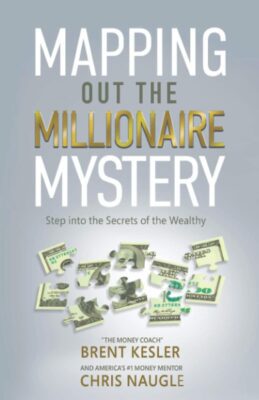
The last little nugget I’ll throw out there is, I wrote a book. I wrote it with a guy named Chris Naugle. If you have never heard of Chris Naugle – you have to Google this guy, to see what he’s all about. I wrote a book called Mapping Out the Millionaire Mystery. If it’s okay with your listeners, anybody who emails me, I’ll send them an e-book of Mapping Out that Millionaire Mystery.
From a portfolio perspective. Do you have any guidelines that you practice to say, “50% of my income, or 50% of my portfolio is going to drive through my policies using IBC.”
I’m going to read page 48 of Nelson’s book in a couple of sentences. Here’s what Nelson Nash says; the title of this page is, Expanding The System To Accommodate All Income. It always sounds strange to people when I say premium and income should match. Let’s start with a basic fact. Doesn’t all your money go through someone else’s bank now? When you get your paycheck, what do you do with it? Write on it, deposit it in someone else’s bank, and then write checks against it to buy the things in life that you want.
While it is in the bank, the bankers lend your money to someone else and make a good living doing it. My thought process on this is through Nelson’s teaching which I didn’t get at first, and it took me a while to get it. Premium and income should match. Every dollar that runs through your hands has to get deposited into somebody’s bank, doesn’t it? Why not deposit all of those funds into your banking system?
But here’s the problem – even though we say that; that’s what we want, it can rarely happen. The reason it can rarely happen is because it’s not about the number of insurance policies somebody has. I have 28 insurance policies. My 24-year-old daughter has 11 policies. I buy a new policy every one to two years. It’s not about the number of policies. The thing that comes into play is how much insurance coverage you can have.
Because anytime you buy a policy, anytime you put money into a policy; whether you like it or not, it buys you death benefit. The thing that you cannot do is you cannot over-insure your body the same way you cannot over-insure a car or a house. So the insurance company gives you a limit to what your insurability is. How do they do that? And what is your insurability? It determines your gross income, your net worth, your age, and your health.
Let’s say we have two guys – the homeless guy that lives under the bridge and you have Jeff Bezos or Mark Zuckerberg. Who’s going to have more insurability? Jeff Bezos and Mark Zuckerberg, because of their net worth and their income. The insurance company determines what your human life value is. As time goes on, it can increase and it generally does for most people.
This is why they come and buy additional policies. I have about 13,000 clients in every state of the country. About 91% of those clients who have been working with me for at least a year have more than one policy. Why do they have more than one? Because they see how this process, this concept, and this system works. So they come back and want to buy more policies.
The question you and the audience might ask is, “Why more policies? Why not put more money into that policy?” The reason you can’t put more money into that policy is because back in June of 1988; I believe, our good old government came up with this thing called the MEC (Modified Endowment Contract) rule.
Because people were trying to stuff all this money into their insurance policies. Of course, anything that we do that’s going to help us and benefit the people, the government is going to find a way to get in – get some of theirs, and get it stopped.
Don’t let the nickel hide the dime, and don’t trip over dollars to pick up pennies.
I’m sorry if one of the audience is in the big government. You probably turned me off after I made that statement. But if you’re in the big government, you probably don’t like me anyway. The thing is, this rule came into effect and now it says, “No. You can’t put all that money into the policy.” If you do, it’s going to hit this ceiling called the MEC. If your policy becomes an MEC, and if you go over that MEC limit, that insurance contract is no longer treated as an insurance contract. It’s treated as an investment, and it’s subject to taxation.
The way we prevent that is through every policy we design. Also, Nelson talks about that on page number 38 of the book. The thing we do is design the policy to get right up to the MEC limit without going over it. Then when somebody wants to add more money to the policy, they seldom can do it in that policy. Maybe 5% or 10% more, but not enough to talk about.
Let’s say, you want to double the premium that you’re putting in. You have to go get another policy – like this glass. Let’s say, this glass will hold 10 ounces of water. After it gets to 10 ounces, it holds no more. It will hold no more. No matter how much I try, I got to go get another glass. Another glass out of the cupboard to put water in it.
The same way in the policy. That’s why we start additional policies, and that’s how we avoid the policies becoming a mech. Even with all that said, you have a human life number, a limit that you can be insured for. Guess what happens? After you have filled up your limit, and your capacity, then you go to your spouse, you go to your children; down the road, grandchildren. If there’s anybody you’re in business with that you have a vested interest in, you insure their bodies.
I owned chiropractic clinics. I had five of them. I had my staff insured. I still do, even though I don’t own the clinic anymore. I had associate doctors who worked in my office. I owned policies on their bodies. I still own them. Even though I have no relationship with them anymore because I either sold the clinic or I’m doing something different. They’re doing chiropractic, while I’m doing this. I still own and control the policy. Even if I own a policy on somebody else, other than myself, I control everything – every function that’s going on inside the policy.
From a management perspective, if you have all of these different policies, and then you’ve changed the paradigm to say you’re making deposits versus this being an expense, so you’re adding this extra step to the process.
Do you have any software tracking or way to manage how you’re allocating some of this capital? What loan payments have you set up for, maybe a vehicle, or something? What have you found that has been the best way to manage that and have visibility into it?
The answer is, as far as all of the clients that work with us; they are all signed by what we call an Implementation Specialist. Every client has an implementation specialist on our team that they work with. What that implementation specialist does is design their policy tools. For example, we have things called the Cash Flow Analysis, and The Money Multiplier map. Those tools are constantly getting updated two to three times a year every four to six months. Why do they get updated? Because people don’t stay the same in their financial life.

No one on this planet, no matter where they live, has ever lost money in a whole life policy with a mutual company that pays dividends. It simply doesn’t happen.
Think of you and me, Dave. One, five, or ten years ago – it was different than what it is today. And it is going to be different one, five, and ten years from now because we go through life. There are windfalls and downfalls. We buy things, and sell things; there’s promotions, there’s demotions. Things change in our financial life. So we have an implementation team that goes through and creates your policy tools. There’s no charge for it. It’s part of our service that we do.
But even without the implementation team, I want you to think of this in almost the same way as you would manage a credit card. In my wallet, I have five credit cards, and on each of those credit cards, my wife takes a piece of masking tape and puts on the credit card what it is to be used for. One is for personal, another one is for business, one is for my business trust, one is for my charitable foundation, another one is for my family trust, and another one is only for my airplane stuff – LLC.
I have all these credit cards because in case I forget which one to use, I look at that piece of masking tape on the credit card and that’s what I hand the person when I’m at the counter. Then my bookkeeper will keep me in line to make sure I’m using the right card for the stuff. If I mess up, it’s no big deal because all she does is transfer money from one fund to the other – she has to do that internal transfer. That’s how easy it is. All of my policies are on a spreadsheet. We can call on Policy 1 to Policy 28 – The oldest one is 1, and the newest one is 28.
It’s not as complicated as like, I got to decide what policy to pull that money out of. Like the credit card scenario that I mentioned, it’s not that complicated at all. Because what you can do is go and get money from any one of those 28 policies. It doesn’t matter which one you pull the money from, and it doesn’t matter which one you pay back. Pull the money from the policy or policies that have cash value available. If you choose to pay back policy loans, put it back into a policy that has a loan balance on it.
It doesn’t matter which one it goes into. Unlike the credit card, which even though the credit card thing is simple, it is more difficult than the policy. The only exception to that would be if you – the customer – want to have individual policies for certain things. I don’t, but we have some clients that like that.
For example, some clients will have this one certain policy to pay all their tax liabilities and all their tax bills, they want it coming out of one policy. There’s another one that says, “I want to give all my charitable giving out of this policy. That’s all I want to use. This policy is charitable giving.” There’s another one that’s paying for their kids’ college tuition. They only want to pull and put money into the college tuition policy here.
It can be as broad or as dialed in as you want it to be. It can be those specific policies for those specific items, or you can do as I do – 28 policies. I don’t care what policy the money comes out of, and I don’t care which one it goes back into. Because at the end of the day, it’s all underneath my management and all underneath my control. I don’t care if Policy 1 has a max loan and Policy 28 has no loan. It doesn’t matter to me at all.
Great practical tips there. I appreciate that breakdown and helping people to implement this in their lives. It takes a lot to get your mind to make that shift to start adding the extra step in the process, but also the management of it. We’re all busy these days with many different things.
If you have insight into it, you can know how to intentionally use the funds and most efficiently as well. It’s been enlightening. I appreciate your time today and coming on the show to help educate the audience. If people do want to connect with you, what would be the best place?
It’s not about the number of policies; it’s about the amount of coverage you can secure.
A couple of things – my website is www.themoneymultiplier.com. If you go there, there’s a tab. It’ll say “Watch Brent Now!” I have a full 90-plus minute presentation on how this concept works. I also have about 70 other videos on there that you can watch.
Also, if you guys are into podcasts, wherever you get your podcasts from, go to The Money Multiplier Podcast. My daughter practices this concept and teaches all around the country – like I do on the live stage, Zoom, and virtual events. She has over 100 podcast episodes and she records one every single week.
The last thing is my email – it is my first name, brent@themoneymultiplier.com. If you would like a copy of my ebook called Mapping Out the Millionaire Mystery, all you have to do is send me an email and say, “I listened to you on the podcast here.” And I’ll send you that eBook.
Great. Thank you again, Brent. Appreciate it.
Thank you. I appreciate you having me on. It’s been a pleasure.
Important Links
Connect with Brent Kesler
Connect with Pantheon Investments
Books Mentioned
People
Further Resources
Your 10-Step Actionable Checklist From This Episode
✅ Select a whole life insurance policy from a mutual company that pays dividends. Ensure the policy is specifically designed for high immediate cash value.
✅ Begin paying premiums into your whole life insurance policy. Treat these payments as deposits rather than expenses.
✅ Apply the borrowed funds to pay off debts, cover expenses, or invest in opportunities.
✅ Use the cash value of your policy as collateral for loans from the insurance company. This allows you to access funds without withdrawing from your policy directly.
✅ Recapture and recycle the money you would have spent elsewhere. Use the funds from policy loans to make purchases and investments while keeping the money within your financial system.
✅ Treat money borrowed from your policy as you would money borrowed from a traditional bank. Commit to repaying it consistently and on time.
✅ Incorporate the principle of velocity into your portfolio by ensuring your money is always in motion to maximize growth and efficiency.
✅ If you have multiple policies, track them on a spreadsheet or similar tool to manage loans and repayments. You can pull money from any policy with available cash value.
✅ Use tools like Cash Flow Analysis and The Money Multiplier maps, and work with an implementation specialist to regularly update your policy strategies based on changing financial situations.
✅ Visit relevant websites, listen to related podcasts, and read books on the Infinite Banking Concept to deepen your understanding and application of these financial principles.
About Brent Kesler
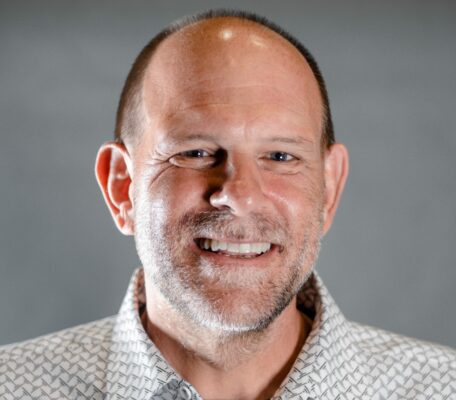 Brent Kesler, a former chiropractor and coach, utilized The Money Multiplier (TMM) Method to eliminate $984,711 in third-party debt within 39 months. Driven by his success and enthusiasm, Brent began teaching the TMM Method after his mentor encouraged him, leading to over forty-one new clients. For the past decade, he has lectured nationwide, helping individuals understand and apply TMM to regain control over their financial lives and escape financial constraints, regardless of their income level.
Brent Kesler, a former chiropractor and coach, utilized The Money Multiplier (TMM) Method to eliminate $984,711 in third-party debt within 39 months. Driven by his success and enthusiasm, Brent began teaching the TMM Method after his mentor encouraged him, leading to over forty-one new clients. For the past decade, he has lectured nationwide, helping individuals understand and apply TMM to regain control over their financial lives and escape financial constraints, regardless of their income level.

